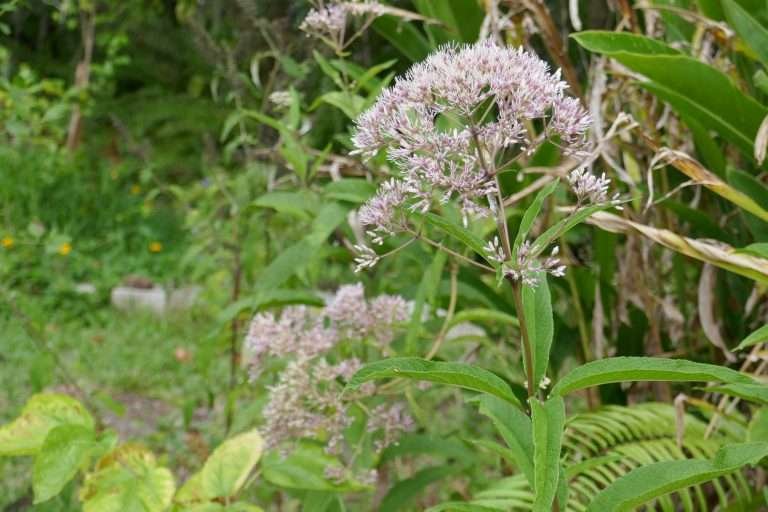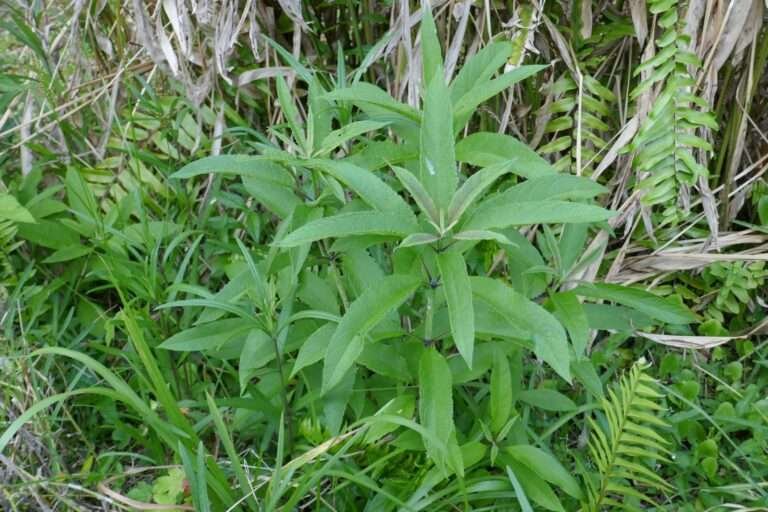
Eupatorium fistulosum
(Joe Pye Weed)

Common Name, Latin Name and Family
Its common name is Joe pye weed and queen-of-the-meadow.
Its Latin name is Eupatorium fistulosum.
It is found in the Asteraceae, or aster, family.
Form
A wildflower that grows to a height of 6 feet or more. The stems are hollow.
Leaves
The leaves appear on stalks in whorls of 4 to 7. The margins are scalloped or toothed with pointed tips.

Flowers
Joe pye weed has large flower heads that are pink in color and appear in the late spring, summer and fall.

Habitat
It naturally occurs in wet meadows and open areas in woodlands.
Native Range
In Florida it is found naturally occurring in the extreme panhandle and Central Florida.
Its native range is to AL, AR, CT, DC, DE, FL, GA, IL, IN, KY, LA, MA, MD, ME, MI, MO, MS, NC, NH, NJ, NY, OH, OK, PA, RI, SC, TN, TX, VA, VT, and WV.
Landscape Use
In the home landscape joe pye weed should be planted in natural areas that are wet or retain some moisture. It is best planted in wilder areas of your green space.
Wildlife Uses
The large flower heads are used as a nectar source for butterflies, bees, and other pollinators. Some songbirds, such as the swamp sparrow, eat the seeds.
Propagation
Can be started by seed, and also transplants.